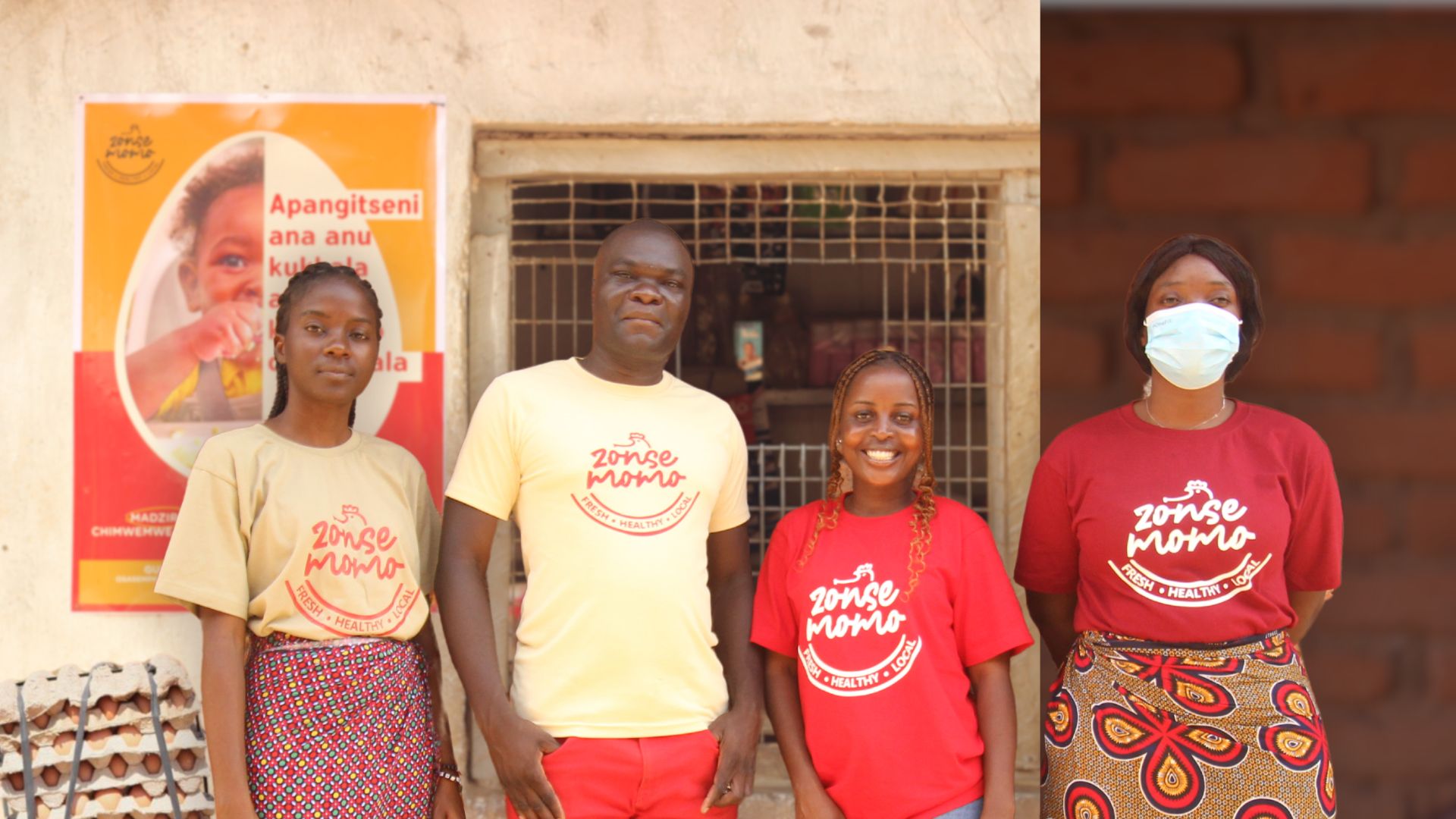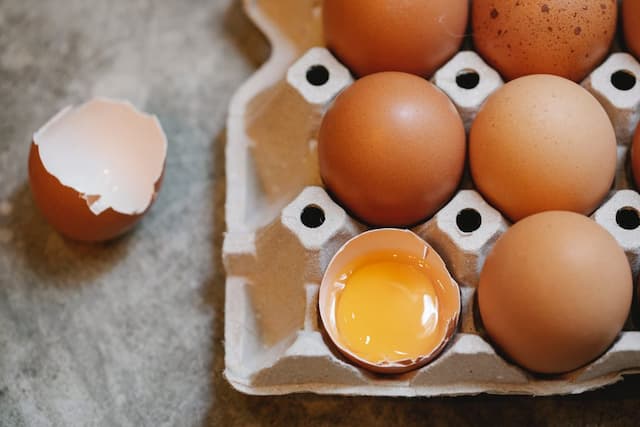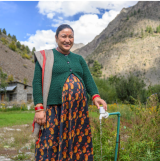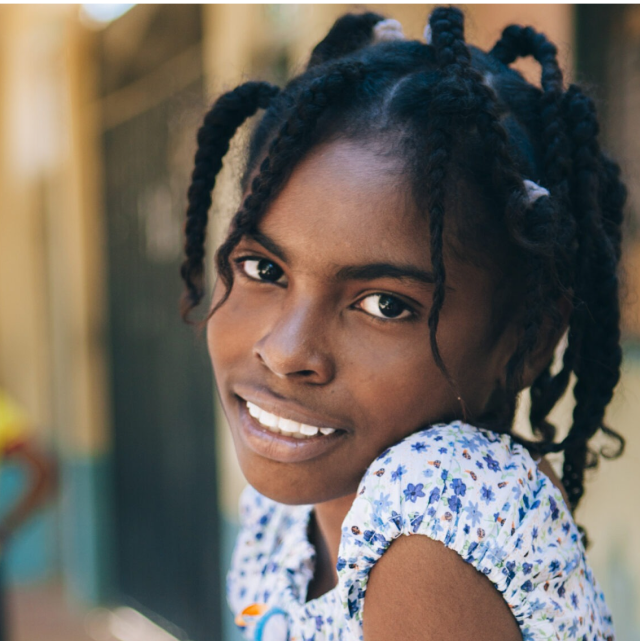The Egg Hub: Addressing Food Security and Livelihoods

Introduction
In Malawi, despite ongoing governmental efforts, high malnutrition rates remain a persistent challenge and contribute significantly to preventable child deaths.1,2 A staggering 35.5% of children under five years suffer from stunting, a number that surpasses the African regional average of 30%.3 Additionally, maternal malnutrition may also contribute to the high burden of child malnutrition rates. Nearly 40% of pregnant women in Malawi suffer from anemia,4 while 14.1% of children are born with a low birth weight,5 setting them off on a challenging path right from the start. Regarding infant and young child feeding, only 17.3% of children 6-23 months achieve minimum dietary diversity.6
The Problem
Despite the numerous benefits of egg consumption, these remain costly, scarce, and rarely consumed by children in Malawi. The average annual per capita consumption is only 28, compared to the global average of 180.7 Furthermore, local cultural beliefs and taboos strongly undermine egg consumption, as discussed in our previous BrainFood episode.8
Now, in our second episode, Ms. Maya Stewart, co-founder of Lenziemill Milling, and Mr. Srujith Lingala from Sight and Life address the widespread challenges in egg production within low- and middle-income countries (LMIC). They highlight an innovative solution that promises to be transformative for smallholder egg farmers, as well as its first implementation in the country of Malawi.
While poultry husbandry plays an important role in the livelihoods of rural communities in Malawi and most of Sub-Saharan Africa,9 the existing poultry farming system predominantly involves extensive backyard setups,10 as highlighted by Maya.
Our biggest challenge is that a majority of our farmers focus on backyard farming. This is where a typical household has approximately 10 birds on the ground.
- Maya Stewart
In Malawi, these models account for 85% of the poultry industry.11 This approach often leads to unhealthy chickens due to inadequate feed and medication, resulting in low productivity.11 Consequently, relying only on backyard farming isn’t viable as a primary income source for Malawian households or farmers, prompting them to invest in alternative agricultural activities such as tobacco farming.
A commercial farmer is only sustainable if he or she has more than 700 birds. This is enough to feed their household, but on top of that, make [their business] sustainable.
- Maya Stewart
Moreover, backyard poultry rearing can increase disease outbreaks and pose health hazards. Evidence suggests that increased exposure to Campylobacter-infected poultry or their feces increases the risk of developing environmental enteric dysfunction – a chronic intestinal inflammation causing poor absorption of essential vitamins and minerals.9,12 This condition is closely linked to childhood stunting, emphasizing the broader health implications associated with this farming practice.13
Given these challenges, continuing conventional poultry-rearing practices is unlikely to improve egg availability and consumption in Malawi. Instead, there is a need to establish more productive, sustainable, and safer approaches to produce and access eggs.
The Innovation
In 2016, Sight and Life conducted a comprehensive value chain assessment investigating the constraints of egg production in Kenya, Ethiopia, Malawi, and India.10 Five business models were analyzed based on four main criteria: (1) the impact on egg production and availability, (2) the relevance for rural and peri-urban communities in LMIC, (3) the sustainability, and (4) the scalability potential.10
These country case studies really validated our hypothesis that the productivity and the viability of eggs in the outgrower and enterprise model are much, much higher compared to the backyard production setting.
- Srujith Lingala
Following this analysis, Sight and Life introduced the “Egg Hub” model, which was piloted in rural Malawi with financial support from Stichting Dioraphte and in collaboration with the local implementing partner, Lenziemill. This model was defined as a centralized unit, led by an Egg Hub operator (often a feed miller), providing high-quality, affordable inputs, extension services, specialized training, and market access to independent farmers involved in layer farming.
When I talk about the Egg Hub model, what really comes to my mind is a feed miller at the center of the Egg Hub and the Egg Hub model as a hub and spoke, where a feed miller is at the center, and each spoke is a smallholder farmer.
- Srujith Lingala
See below for a visual representation of the Egg Hub model and tune in to the podcast to dive deeper into how the Egg Hub farmers collaborate and sell their eggs.
.png)
While the Egg Hub began addressing egg supply challenges in the Malawian poultry sector, it was also essential to ensure that these eggs were being consumed by the target populations – pregnant and lactating women and children under five. For this to happen, demand for eggs was generated through a six-month social marketing campaign.
The campaign was based on insights derived from a formative research study, encompassing existing knowledge, attitudes, behaviors, cultural nuances, as well as religious and social influences around egg consumption.
- Srujith Lingala
The Outcome
Chapter five of the 2023 State of Food Security and Nutrition in the World (SOFI report) features the Egg Hub as an innovative business model that enhances consumer access to nutritious foods. It also provides small-scale farmers with market access and quality inputs in what they called a “scalable win-win solution for small-scale producers and low-income consumers.”
The “scalable win-win solution” of this model ensures egg farmers are earning a steady income throughout the year. This stability is particularly valuable as other harvests can be highly dependent on numerous factors, including rain, which is becoming increasingly irregular with the impacts of climate change.14 The Egg Hub supports this reliable income by ensuring the necessary infrastructure for a continuous supply of eggs and by driving demand through a social marketing campaign that has steadily increased egg consumption.
In the event that rainfed agriculture does not work, they have a plan B, which for many of the Egg Hub farmers has become their plan A. Their plan A, which is the Egg Hub model, is actually supporting their other farming activities. And for those who feel that farming is not part of their income generating activities anymore, most of them invest in other income earning streams.
- Maya Stewart
After a six-month social marketing campaign, egg consumption greatly increased among our target audience – pregnant and lactating women and children under five. At the end of the campaign, 75% of women and children in the communities getting their eggs from the Egg Hug ate eggs 1-2 times per week, compared to 43% at baseline.
Lessons learned and next steps
With this first Egg Hub pilot in Malawi, Sight and Life and Lenziemill have successfully implemented a sustainable business model based on the earlier mentioned four criteria: impact, relevance, sustainability, and scalability.
When we developed the Egg Hub model, it was very important for us from the very beginning that the model we are developing and piloting in Malawi needed to be scaled beyond a single geography. It needed to be a scalable solution.
- Srujith Lingala
For this to be successful, it was crucial to work with farmers who have a passion for farming. Not every farmer can be a poultry farmer, as it requires dedication, attention, patience, and internal drive.
I would like [the farmers] to dream big - not just with me, but with themselves, their families, and within their community. […] they have to think beyond what they think they can achieve today and where they would like to go in the next five years.
- Maya Stewart
Listen to the podcast to hear the story of Grace, a passionate smallholder farmer who has exemplified just this and has successfully expanded her poultry farm.
Listen to the episode: What’s an Egg Hub? (Part 1 | Part 2).
References
- Machira K, Chirwa T. Dietary consumption and its effect on nutrition outcome among under-five children in rural Malawi. PLoS One. 2020 Sep 14;15(9):e0237139.
- Ntenda PAM. Association of low birth weight with undernutrition in preschool-aged children in Malawi. Nutr J. 2019 Sep 2;18:51.
- UNICEF/WHO/World Bank. Joint Child Malnutrition Estimates Expanded Database: Stunting, Wasting and Overweight [Internet]. 2022. Available from: https://data.unicef.org/resources/dataset/malnutrition-data
- WHO. Global Health Observatory Data Repository/World Health Statistics. [Internet]. Available from: https://www.who.int/data/gho/data/indicators.
- UNICEF/WHO. Low birthweight estimates [Internet]. 2022. Available from: https://data.unicef.org/topic/nutrition/low-birthweight
- UNICEF. Global databases: Infant and young child feeding [Internet]. 2021. Available from: http://data.unicef.org/nutrition/iycf.
- Food and Agriculture Organization of the United Nations. FAOSTAT - Compare Data [Internet]. 2023 [cited 2023 Sep 25]. Available from: https://www.fao.org/faostat/en/#compare
- Maliwichi-Nyirenda C, Maliwichi L. Food Related Taboos Observed During Pregnancy in Malawi. Studies on Ethno-Medicine. 2016 Apr 1;10:263–8
- United Nations Children’s Fund (UNICEF). Fed to Fail? The Crisis of Children’s Diets in Early Life [Internet]. New York; 2021 Sep. Available from: https://www.unicef.org/reports/fed-to-fail-child-nutrition
- Beesabathuni K, Lingala S, Kraemer K. Increasing egg availability through smallholder business models in East Africa and India. Matern Child Nutr. 2018 Oct;14 Suppl 3(Suppl 3):e12667.
- Gilbert M, Conchedda G, Van Boeckel TP, Cinardi G, Linard C, Nicolas G, et al. Income Disparities and the Global Distribution of Intensively Farmed Chicken and Pigs. PLoS One. 2015 Jul 31;10(7):e0133381.
- Alders RG, Dumas SE, Rukambile E, Magoke G, Maulaga W, Jong J, et al. Family poultry: M ultiple roles, systems, challenges, and options for sustainable contributions to household nutrition security through a planetary health lens. Maternal & child nutrition. 2018;14:e12668.
- Lunn PG, Northrop-Clewes CA, Downes RM. Intestinal permeability, mucosal injury, and growth faltering in Gambian infants. Lancet. 1991 Oct 12;338(8772):907–10.
- C.M. Godde, D. Mason-D’Croz, D.E. Mayberry, P.K. Thornton, M. Herrero. Impacts of climate change on the livestock food supply chain; a review of the evidence. Global Food Security. 2021;28:100488.
Read next
Discover more
News & announcements
Find out what is new at Sight and Life
Multimedia
Explore our videos, podcasts, and infographics






